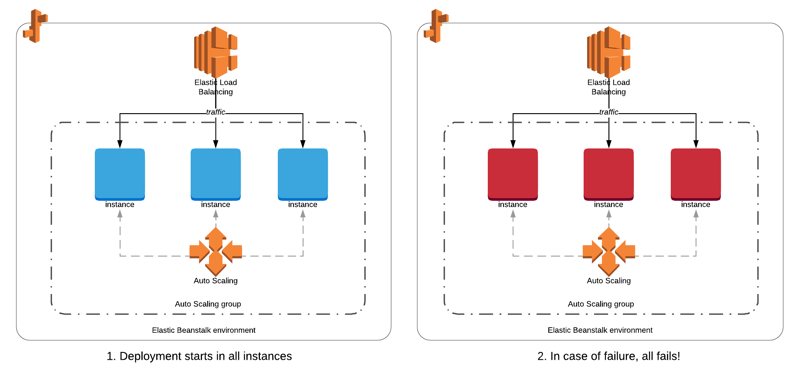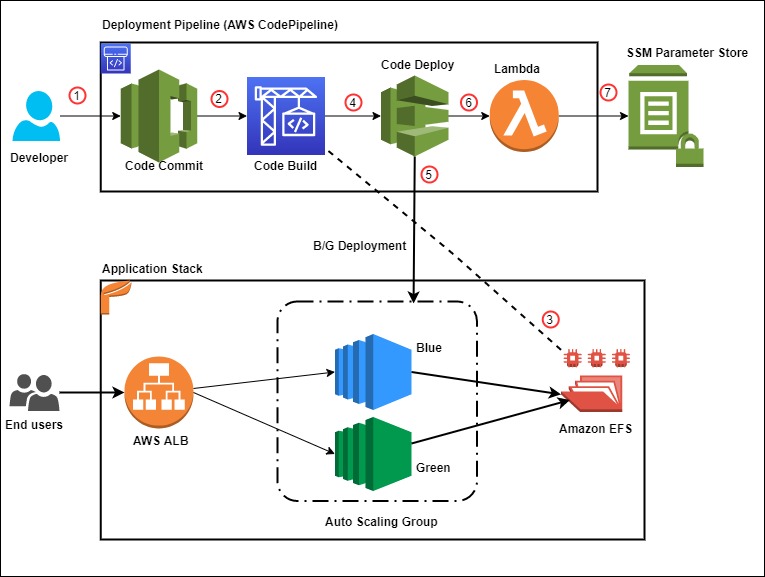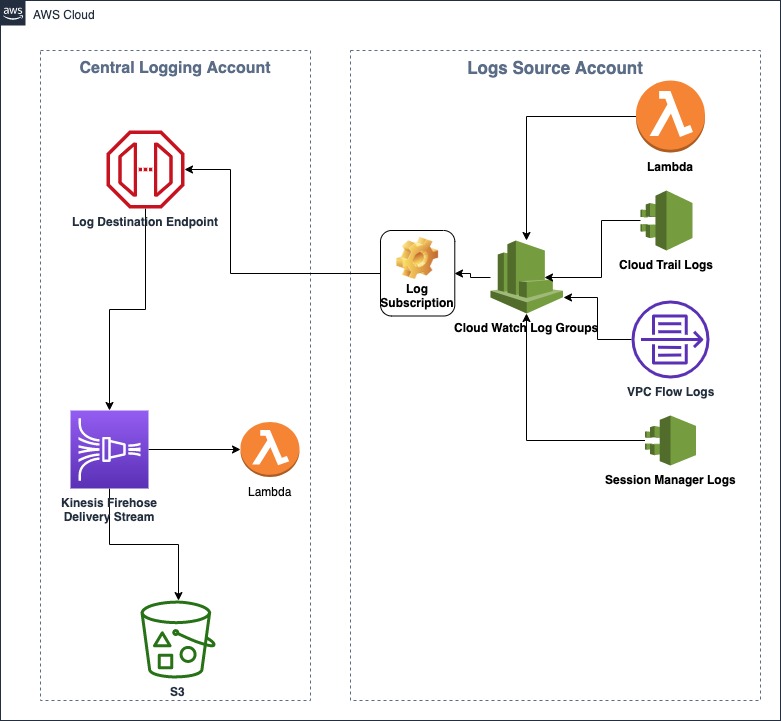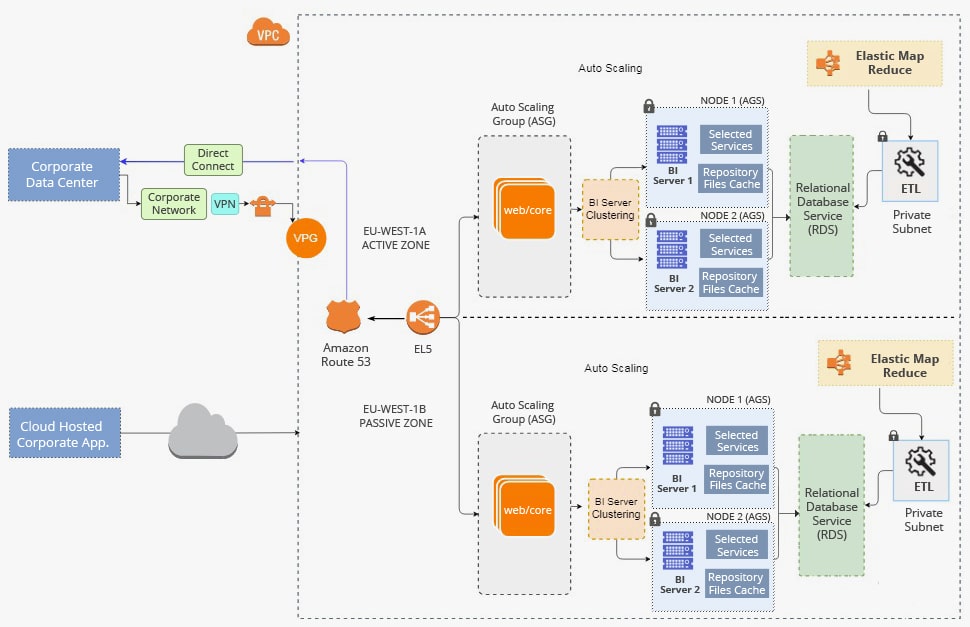Choosing the Right AWS Service for Application Deployment
When it comes to deploying and monitoring applications on AWS, selecting the most suitable service is crucial for ensuring efficient and reliable application management. AWS offers several services tailored for application deployment, such as Elastic Beanstalk, CodePipeline, and CloudFormation. Each service has distinct features, benefits, and ideal use cases, making it essential to understand their differences before making a decision.
AWS Elastic Beanstalk
Elastic Beanstalk is a fully managed service that simplifies application deployment, scaling, and management. It supports popular programming languages, including Java, Python, .NET, Node.js, PHP, and Ruby. Elastic Beanstalk automatically handles capacity provisioning, load balancing, scaling, and application health monitoring, allowing developers to focus on writing code without worrying about the underlying infrastructure.
AWS CodePipeline
CodePipeline is a continuous integration and delivery service that automates application deployment. It integrates with version control systems, such as GitHub and AWS CodeCommit, and enables developers to model, visualize, and automate their software release process. CodePipeline supports various deployment providers, making it an ideal choice for organizations that require flexibility and customization in their deployment strategies.
AWS CloudFormation
CloudFormation is a service for infrastructure as code, enabling developers to create and manage AWS resources using templates. These templates, written in JSON or YAML, define the resources and their dependencies, allowing developers to create, update, and delete stacks of resources in a controlled and predictable manner. CloudFormation simplifies infrastructure management and ensures consistency across different environments.
Selecting the Ideal Service
Choosing the right service depends on several factors, including the complexity of the application, the desired level of control, and the need for automation. Elastic Beanstalk is best suited for developers who want a fully managed service for deploying and scaling their applications. CodePipeline is ideal for organizations that require continuous integration and delivery, while CloudFormation is recommended for those who prioritize infrastructure as code and automation.
Implementing AWS Elastic Beanstalk for Seamless Application Deployment
AWS Elastic Beanstalk is a fully managed service that simplifies application deployment, scaling, and management. By using Elastic Beanstalk, developers can focus on writing code while the service handles the underlying infrastructure. This section provides a step-by-step guide on how to use AWS Elastic Beanstalk for deploying applications, highlighting its ease of use and automation capabilities.
Creating an Elastic Beanstalk Environment
To get started with Elastic Beanstalk, create a new environment by selecting a platform that matches your application’s programming language and runtime. Provide necessary details, such as environment name, platform, and region, and then click “Create.” Elastic Beanstalk will automatically create resources, including an EC2 instance, a load balancer, and a database, based on the chosen platform.
Configuring Application Versions
After setting up the environment, configure application versions by creating a source bundle, which includes your application code and any dependencies. Upload the source bundle to Elastic Beanstalk, which will then deploy the application and make it accessible via the environment’s URL.
Setting Up Environment Properties
Environment properties allow you to configure application settings, such as environment variables, without modifying the source code. To set up environment properties, navigate to the configuration page, add the necessary key-value pairs, and save the changes. Elastic Beanstalk will automatically restart the application with the updated settings.
Monitoring Application Health
Elastic Beanstalk continuously monitors application health and provides detailed metrics through AWS CloudWatch. Access the health dashboard to view the application’s status, including any warnings or errors. Use this information to diagnose and resolve issues, ensuring the smooth operation of your application.
Benefits of AWS Elastic Beanstalk
AWS Elastic Beanstalk offers several benefits for deploying and monitoring applications on AWS, including:
- Ease of use: Elastic Beanstalk automates infrastructure management, allowing developers to focus on writing code.
- Scalability: Elastic Beanstalk automatically scales resources up or down based on application demand, ensuring optimal performance and cost management.
- Integration: Elastic Beanstalk integrates with other AWS services, such as CloudWatch and CodePipeline, enabling seamless monitoring and deployment workflows.
- Customization: Developers can customize their environment and configuration settings to meet their specific application needs.
Automating Application Deployment with AWS CodePipeline
AWS CodePipeline is a continuous integration and delivery service that automates application deployment. By using CodePipeline, developers can create custom workflows, integrate with version control systems, and set up deployment stages, ensuring a smooth and efficient deployment process. This section explains how to use AWS CodePipeline for automated application deployment.
Creating a Pipeline
To create a pipeline, navigate to the CodePipeline console and click “Create pipeline.” Provide a name, choose a service role, and select the source provider (e.g., GitHub, AWS CodeCommit). Configure the source stage by providing the repository and branch details, then proceed to create the next stages.
Integrating with Version Control Systems
CodePipeline integrates with popular version control systems, such as GitHub and AWS CodeCommit. By connecting your repository to CodePipeline, you can ensure that your application code is always up-to-date and ready for deployment. Configure the source stage to pull the latest code changes and trigger the pipeline automatically.
Setting Up Deployment Stages
Deployment stages define the steps required to deploy your application. Typically, stages include build, test, and production. For each stage, select a deployment provider (e.g., AWS Elastic Beanstalk, Amazon ECS) and configure the necessary settings. CodePipeline will automatically execute the stages in sequence, ensuring a consistent and reliable deployment process.
Benefits of AWS CodePipeline
AWS CodePipeline offers several benefits for deploying and monitoring applications on AWS, including:
- Automation: CodePipeline automates the deployment process, reducing manual intervention and potential errors.
- Customization: Developers can create custom workflows and integrate with various deployment providers to meet their specific application needs.
- Integration: CodePipeline integrates with popular version control systems and AWS services, enabling seamless deployment and monitoring workflows.
- Continuous Integration and Delivery: CodePipeline supports continuous integration and delivery, ensuring that the latest code changes are always ready for deployment.
Simplifying Infrastructure Management with AWS CloudFormation
AWS CloudFormation is a service that enables developers to manage and deploy infrastructure as code. By using CloudFormation, developers can create templates, manage stack updates, and automate the deployment of AWS resources. This section introduces AWS CloudFormation as a solution for infrastructure management and explains how it simplifies the management and deployment of AWS resources.
Creating Templates
Templates are JSON or YAML files that define the resources and their dependencies. To create a template, start by defining the desired AWS resources, such as EC2 instances, RDS databases, or S3 buckets. Next, specify the properties for each resource, including instance types, storage sizes, and network configurations. Finally, save the template file and use it to create a stack.
Managing Stack Updates
A stack is a collection of AWS resources managed by CloudFormation. To update a stack, modify the template file and submit the changes to CloudFormation. The service will automatically update the resources and their dependencies, ensuring a consistent and reliable infrastructure deployment.
Benefits of AWS CloudFormation
AWS CloudFormation offers several benefits for deploying and monitoring applications on AWS, including:
- Infrastructure as Code: CloudFormation enables developers to manage infrastructure as code, ensuring consistent and repeatable deployments.
- Automation: CloudFormation automates the deployment and management of AWS resources, reducing manual intervention and potential errors.
- Integration: CloudFormation integrates with other AWS services, enabling seamless deployment and monitoring workflows.
- Version Control: CloudFormation templates can be stored in version control systems, allowing developers to track changes and collaborate on infrastructure management.
Monitoring AWS Applications with CloudWatch and X-Ray
AWS CloudWatch and X-Ray are essential tools for monitoring AWS applications, providing insights into performance issues, troubleshooting, and optimizing applications. This section discusses the features, setup, and integration of CloudWatch and X-Ray, helping you to better understand and manage your AWS applications.
AWS CloudWatch
AWS CloudWatch is a monitoring service that collects and tracks metrics, logs, and events from AWS resources, applications, and services. By using CloudWatch, developers can monitor application performance, set alarms, and receive notifications when specific thresholds are met. CloudWatch integrates with various AWS services, enabling centralized monitoring and management of AWS applications.
Setting Up CloudWatch
To set up CloudWatch, navigate to the CloudWatch console and enable the necessary services for monitoring. Configure the desired metrics, thresholds, and alarms, and integrate CloudWatch with other AWS services or external communication channels for notifications. Once configured, CloudWatch will continuously monitor your AWS resources and applications, providing real-time insights and alerts.
AWS X-Ray
AWS X-Ray is a service that helps developers analyze and debug distributed applications, providing insights into performance issues, errors, and latencies. By using X-Ray, developers can create service maps, analyze traces, and identify bottlenecks, enabling them to optimize application performance and improve user experience.
Setting Up X-Ray
To set up X-Ray, enable the service for your AWS application and configure the necessary settings. X-Ray integrates with various AWS services, such as EC2, ECS, and Lambda, allowing developers to trace requests as they travel through the application. Once configured, X-Ray will provide detailed insights into application performance, enabling developers to identify and resolve issues quickly.
Benefits of CloudWatch and X-Ray
CloudWatch and X-Ray offer several benefits for deploying and monitoring applications on AWS, including:
- Centralized Monitoring: CloudWatch and X-Ray enable developers to monitor and manage AWS resources and applications from a single location.
- Performance Insights: CloudWatch and X-Ray provide detailed insights into application performance, enabling developers to identify and resolve issues quickly.
- Integration: CloudWatch and X-Ray integrate with various AWS services, ensuring seamless monitoring and management of AWS applications.
- Automated Alerts: CloudWatch and X-Ray can automatically send alerts when specific thresholds are met, enabling developers to proactively address issues and maintain reliable application performance.
Setting Up Custom Alarms and Notifications with AWS CloudWatch
AWS CloudWatch enables developers to create custom alarms and notifications, providing real-time insights into application performance and enabling proactive issue resolution. This section provides a guide on creating custom alarms and notifications in CloudWatch, discussing the use of metrics, thresholds, and notifications. Learn how to set up alerts and integrate them with other AWS services or external communication channels.
Using Metrics
Metrics are data points that track the performance of AWS resources and applications. CloudWatch supports various metrics, such as CPU utilization, network traffic, and memory usage. To create custom alarms, select the desired metrics and specify the relevant thresholds and time periods.
Setting Thresholds
Thresholds are the values that trigger alarms when crossed. To set up thresholds, define the upper or lower limits for the selected metrics. When the metric value exceeds or falls below the specified threshold, CloudWatch will trigger an alarm and send a notification.
Creating Notifications
Notifications are the messages that CloudWatch sends when an alarm is triggered. To create notifications, define the recipients (e.g., email, SMS, or Slack) and the content of the message. CloudWatch can send notifications to individual users or distribution lists, ensuring that the right people are informed when issues arise.
Integrating with AWS Services and External Communication Channels
CloudWatch integrates with various AWS services, such as SNS, Lambda, and SES, enabling developers to create custom workflows and automate issue resolution. Additionally, CloudWatch supports external communication channels, such as Slack, PagerDuty, and OpsGenie, allowing developers to centralize their monitoring and management efforts.
Benefits of Custom Alarms and Notifications
Custom alarms and notifications offer several benefits for deploying and monitoring applications on AWS, including:
- Proactive Issue Resolution: Custom alarms and notifications enable developers to address issues before they become critical, ensuring reliable application performance.
- Integration: CloudWatch integrates with various AWS services and external communication channels, enabling developers to create custom workflows and centralize their monitoring and management efforts.
- Automation: CloudWatch can automatically trigger actions when specific thresholds are met, reducing manual intervention and potential errors.
- Customization: Developers can create custom alarms and notifications based on their specific needs and requirements, ensuring that they receive the most relevant and actionable insights.
Optimizing Application Performance with AWS X-Ray
AWS X-Ray is a powerful service that enables developers to analyze and debug distributed applications, providing insights into performance issues, errors, and latencies. By using X-Ray, developers can create service maps, analyze traces, and identify bottlenecks, enabling them to optimize application performance and improve user experience. This section explains how to use AWS X-Ray for application performance tracing, discussing the setup, features, and benefits of this service.
Setting Up X-Ray
To set up X-Ray, enable the service for your AWS application and configure the necessary settings. X-Ray integrates with various AWS services, such as EC2, ECS, and Lambda, allowing developers to trace requests as they travel through the application. Once configured, X-Ray will provide detailed insights into application performance, enabling developers to identify and resolve issues quickly.
Creating Service Maps
Service maps are visual representations of the application’s architecture and the interactions between its components. X-Ray automatically generates service maps, enabling developers to quickly understand the application’s structure and identify potential issues. Service maps can be filtered by time, service, or error rate, providing developers with the most relevant information for troubleshooting and optimization.
Analyzing Traces
Traces are records of the request’s journey through the application, including the time spent in each component and any errors or exceptions encountered. X-Ray allows developers to analyze traces, providing detailed information about the application’s performance and enabling them to identify and resolve issues quickly. Traces can be filtered by time, service, or error rate, providing developers with the most relevant information for troubleshooting and optimization.
Identifying Bottlenecks
Bottlenecks are performance issues that limit the application’s scalability and throughput. X-Ray helps developers identify bottlenecks by providing detailed information about the application’s performance, including the time spent in each component and any errors or exceptions encountered. By using X-Ray, developers can quickly identify and resolve bottlenecks, improving the application’s performance and scalability.
Benefits of AWS X-Ray
AWS X-Ray offers several benefits for deploying and monitoring applications on AWS, including:
- Performance Insights: X-Ray provides detailed insights into application performance, enabling developers to identify and resolve issues quickly.
- Integration: X-Ray integrates with various AWS services, ensuring seamless monitoring and management of AWS applications.
- Automated Tracing: X-Ray automatically traces requests as they travel through the application, reducing manual intervention and potential errors.
- Customization: Developers can create custom views and filters based on their specific needs and requirements, ensuring that they receive the most relevant and actionable insights.
Best Practices for Deploying and Monitoring Applications on AWS
Deploying and monitoring applications on AWS can be a complex process, but adopting best practices can help ensure a more efficient and reliable experience. This section summarizes best practices for deploying and monitoring applications on AWS, including infrastructure as code, continuous integration and delivery, automated monitoring, and proactive issue resolution. By following these practices, developers can optimize their AWS application management experience.
Infrastructure as Code
Infrastructure as code (IaC) is the process of managing and provisioning AWS resources using configuration files. IaC enables developers to automate the deployment and management of AWS resources, reducing manual intervention and potential errors. Services such as AWS CloudFormation and Terraform enable IaC, providing developers with a consistent and repeatable way to manage their AWS infrastructure.
Continuous Integration and Delivery
Continuous integration and delivery (CI/CD) is the practice of automating the software development process, from code commit to production deployment. CI/CD enables developers to quickly and efficiently deliver software updates, reducing the time and effort required for manual testing and deployment. Services such as AWS CodePipeline and Jenkins enable CI/CD, providing developers with a seamless and automated way to manage their software development lifecycle.
Automated Monitoring
Automated monitoring is the practice of using AWS services to continuously monitor the performance and health of AWS applications. Automated monitoring enables developers to quickly identify and resolve issues, reducing downtime and improving the overall user experience. Services such as AWS CloudWatch and X-Ray enable automated monitoring, providing developers with detailed insights into application performance and enabling them to proactively address issues.
Proactive Issue Resolution
Proactive issue resolution is the practice of using AWS services to anticipate and address potential issues before they become critical. Proactive issue resolution enables developers to maintain reliable application performance and improve the overall user experience. Services such as AWS CloudWatch and X-Ray enable proactive issue resolution, providing developers with detailed insights into application performance and enabling them to identify and address potential issues before they become critical.
Benefits of Best Practices
Adopting best practices for deploying and monitoring applications on AWS offers several benefits, including:
- Efficiency: Best practices enable developers to automate and streamline the deployment and management of AWS applications, reducing manual intervention and potential errors.
- Reliability: Best practices enable developers to maintain reliable application performance, reducing downtime and improving the overall user experience.
- Scalability: Best practices enable developers to quickly and efficiently scale their AWS applications, supporting growth and innovation.
- Security: Best practices enable developers to secure their AWS applications, protecting sensitive data and ensuring compliance with industry standards and regulations.







